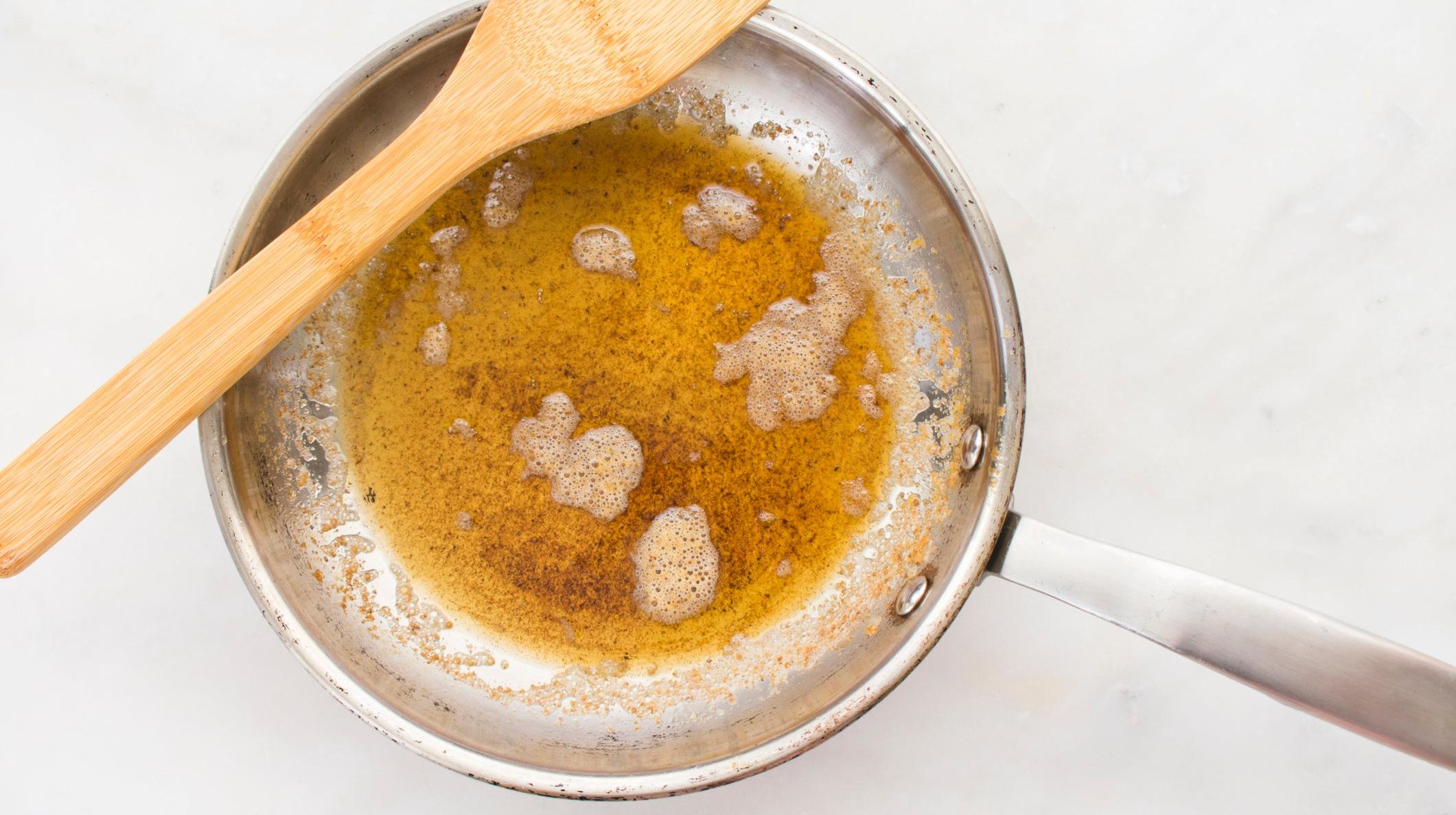Make Brown Butter, Make Yourself A Better Baker
Try to have patience. If you have none, try this trick instead.
If it's true that everything is better with butter, it stands to reason that everything better can be made better-er with brown butter. This magical ingredient lends a deep and beautiful nutty flavor to whatever you're making, whether it's a sweet or savory dish. Butter can be replaced in a recipe with brown butter to improve an endless array of recipes—so try making a habit of browning your butter every time you bake. It only takes an extra bit of patience, and you'll reap huge rewards.
What is brown butter?
To understand what brown butter is, you have to understand butter more broadly. In its natural, fresh-from-the-supermarket state, American-style butter is about 80% butterfat, 18% water, and 2% milk solids. When cooked low and slow, those milk solids "fry" in the melted butterfat, changing from milky white to golden brown and lending a nutty flavor to an already wonderful thing.
In theory, it should be easy for virtually anyone to make brown butter, as long as they can melt butter and identify the color brown. And yet far too many people struggle with the task, and needlessly so. Milk solids can go from brown to burnt in a matter of seconds, and once they've burnt, there's no going back.
The best technique for browning butter
The easiest way to avoid burning your milk solids is by melting the butter sloooooowly over medium-low heat while keeping a constant eye on it. Yes, this is very, very boring. After a minute or two of staring at butter, it's understandable why a person would want to crank the heat up to high and hope for the best. This will cause you to fail spectacularly. Don't do it!
Here's a butter-browning trick for less patient people: I set a small chunk of cold butter to the side of the pan, and when my melted butter is the right shade of brown, I add the cold butter to the pan to quickly reduce the temperature. Even if you believe you have the willpower to stay on the low-and-slow path, I suggest you do this too, just in case. The internet has destroyed our attention spans, and our butter shouldn't have to suffer for it.
How to make brown butter
- Cut one stick of cold butter into eight pieces. Set one of those pieces to the side.
- Add the remaining seven pieces of butter to a skillet set over medium-low heat and allow the butter to melt.
- Continue cooking the butter while gently swirling it around the pan until it begins to turn light brown. (It can go from brown to burnt quickly, so do not take your eye off of it!)
- Turn off the heat and continue swirling the butter around the hot pan until it turns a medium-dark brown, then add the reserved piece of cold butter and keep swirling until it melts.
- Optional: For extra brown bits, add a bit of non-fat powdered milk to the butter right after it melts.
The best uses for brown butter
- Make some ridiculously indulgent slice-and-bake brown butter shortbread cookies. These can be made with toasted nuts, chocolate chips, or left alone to be their best brown butter-y selves.
- Try these brown butter bacon chocolate chip cookies.
- Spend a Saturday morning making my famous brown butter cinnamon rolls. They're a big production, but the flavor is worth it. I'd never ask you to do such a laborious thing if it didn't yield life-changing cinnamon rolls.
- Turn the magic of brown butter into a condiment that you can sprinkle on just about anything. Toasted brown butter solids are endlessly useful; stir them into pancake batter, sprinkle them on roasted vegetables, add it to pasta—whatever dish you want to make 20% more flavorful, brown butter is your friend.
